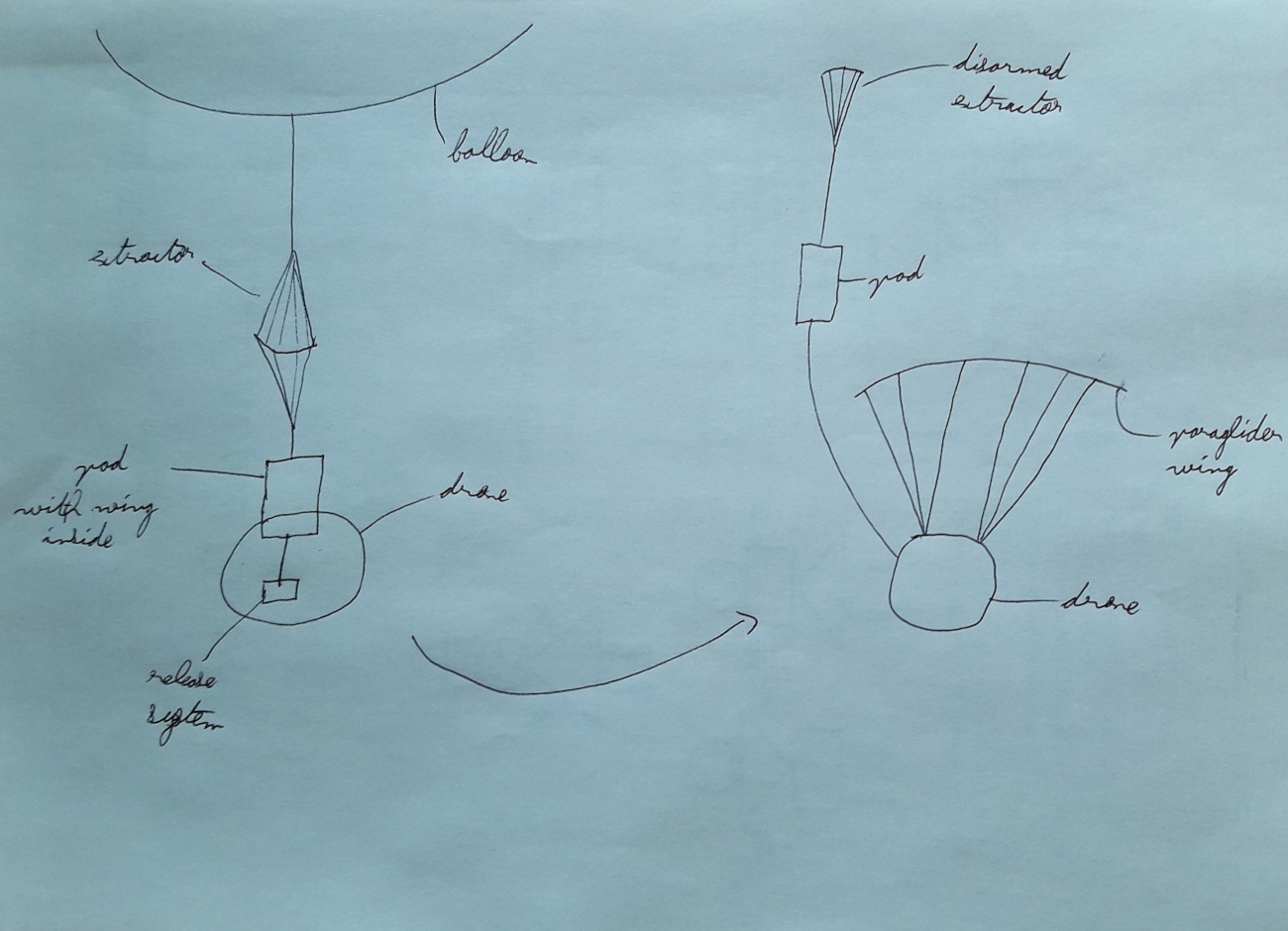Designing and building a release system to launch our drone from the stratosphere!
For several months we have been working with StratoFly, an association whose goal is to provide access to the stratosphere for everyone through the launch, tracking and recuperation of stratospheric balloons.
We are going to use our drone to guide the return to Earth of the payload and allow choosing the recovery site. It’s a great way to avoid landing at an airport, in a forest or on a hangar!
In practice, current regulations require our drone to lose its propulsion, but we can keep our servo-controlled wing. More restrictive yet, the altitude at which our paraglider opens up its wing must be carefully programmed in order to avoid any lift issues at high altitude. For that we designed and built a release system that is controlled by our drone. It’s composed of two keys components:
- an extractor (a small parachute) that allows slowing down the free-fall;
- a pod that contains the paraglider’s wing and which is pulled by the extractor when the autopilot decides it’s time to open the wing.

Thanks to an ingenious system that plays on the different lines, as soon as the paraglider wing opens, the extractor is disarmed and no longer produces drag.
The pod and the extractor were sewn and built from polyester fabric.
